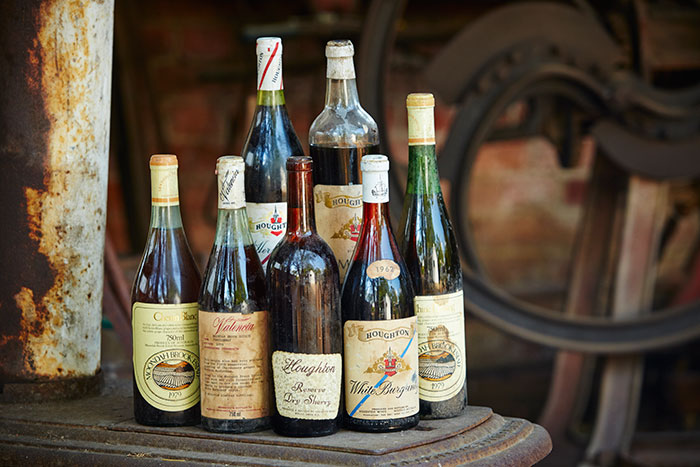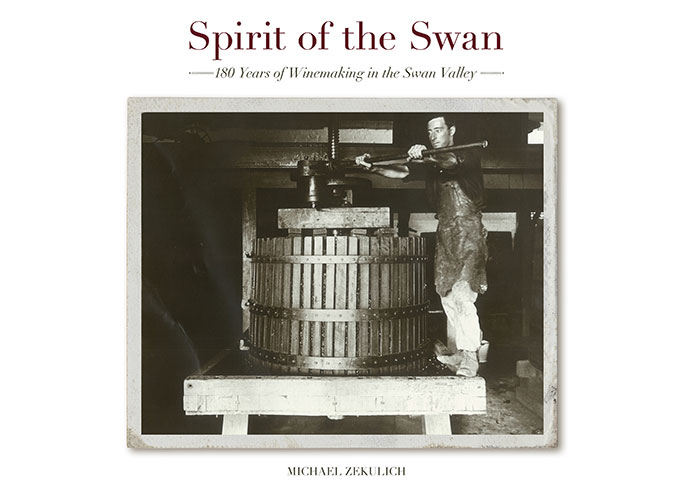Perth journalist Michael Zekulich explores 180 years of winemaking in the Swan Valley, Australia’s second oldest vineyard area.

When Captain James Stirling and his team sailed up the Swan River in 1827 to see if the area was suitable for a colony, they passed land that, just seven years later, would produce the Swan Valley's first commercial wine.
That was at South Guildford where British botanist Thomas Waters had taken up a 20ha land grant – stretching from the river into the present-day Perth airport. Further upstream, the party would camp on a high riverside embankment near the present-day historic All Saints church at Henley Brook, and look across today's Upper Reach vineyard to the Darling Range beyond, reporting glowingly on the scene before them.
Stirling wrote that the "richness of the soil, the bright foliage of the shrubs, the majesty of the surrounding trees, the abrupt and red-coloured banks of the river occasionally seen, and the view of the blue summit of the mountain from which we were not far distant made the scenery around the spot as beautiful as anything of the kind I have ever witnessed."
In 1829, on the banks of the Swan at Guildford, Waters would establish the Olive Farm, WA's first vineyard. The farm, named after the olive trees planted along Great Eastern Highway, has become a building site to convert the old 2.1ha vineyard into 60 strata-titled residences. However, the old cellar built by Waters – and for many years rated the oldest operating facility in Australia – has been registered for protection by the Heritage Council of WA.
Now visitors to Upper Reach can take in the view while sipping a fine wine such as the winery's outstanding shiraz and enjoying matching food.

The fledgling Swan River Colony was fortunate that from 1823 to 1829 Waters
had been commissioned by the British Government to work in South Africa. There, in the vineyards of the famous Cape region, he had learned about tending vines and making wines, skills vital to the new settlement.
By 1848, Waters had 12,000 fruit-bearing vines flourishing on his land, with another 6000 in a nursery. Sadly, he drowned in an unfortunate accident at Guildford in 1869, aged 75. His headstone can still be seen in the grounds of Guildford Grammar School, to the east of the chapel.
But, like other winemaking settlers, Waters suffered in the 19th century from a lack of market. There were just not the people to see the industry significantly expand, despite the best efforts of people like the dynamic Charles William Ferguson whose father John – the colony's surgeon – had bought Houghton in 1859 for £350.
But the discovery of gold dramatically changed the situation, as prospectors and others from near and far sought to strike it rich in the WA Goldfields. Most importantly, they brought with them a thirst that included a palate for wine. Barrels from the Swan Valley were railed to the area and quickly railed back empty to be refilled and returned.
George Pasalich told how he rode a bicycle from his West Swan property in the 1930s, wobbling over mostly rough dirt roads to Midland with a five-gallon keg – destined for the Goldfields –balanced on his handlebars. He was part of the so-called Dalmatian Invasion, which in the 1920s saw big numbers of immigrants from war-torn and poverty-stricken Croatia – now a Mecca for tourists seeking its pristine coastline – look to WA for a new home, settling on the Swan with other Southern Europeans, especially Italians.
They were to bring their different ways to the area, such as women and children working among the vines, while at the table there could be found, for the first time, garlic and olive oil being used in cooking, and red wine on the table.
But the main benefit of the arrival of these new settlers was their vine and wine skills, lauded later by industry leaders.
Another major change was foreshadowed in the 1960s by second-generation winemaker John Kosovich, who pushed for increased tablewine production to reduce the emphasis on fortifieds, saying at the time that while it might suit the English to have a sherry at lunchtime in their climate, it was not the way to go in Australia.
John marked his 62nd vintage in 2014 – an outstanding record – while the Mann family has exceeded 100 years in four generations of guiding, supporting and promoting the Swan Valley and WA wine industries. In his role as an Agriculture Department advisor, Dorham Mann (whose father, Jack, is regarded by many as the doyen of the WA wine industry), was another to influence the Valley's small winemakers into greater table-wine production.
Spirit of the Swan deals with present-day wine producers as well as key individuals of the past, and includes other sections such as showing and judging, as well as a final chapter on the area's future. Comments from industry stalwarts, such as City of Swan Mayor Charlie Zannino, scientist Dr John Gladstones, Sandalford Wines principal and WA Tourism Council chairman Peter Prendiville, and winemaker Daniel Pinelli, are included. Each expresses a view about the Swan's future, highlighting its close proximity to Perth's CBD and the possible changes ahead, such as new varieties commercially grown, and concern about further subdivision of crucial vineyard land for urban development.
As Mayor Zannino says, "After 180 years, the Swan Valley has become a fascinating wine region and remarkable community with a generous spirit, unique personality and a welcoming vibe that invites us to repeatedly explore and discover what is now known as Perth's Valley of Taste."

Spirit of the Swan is published by the Swan Valley and Regional Winemakers Association.